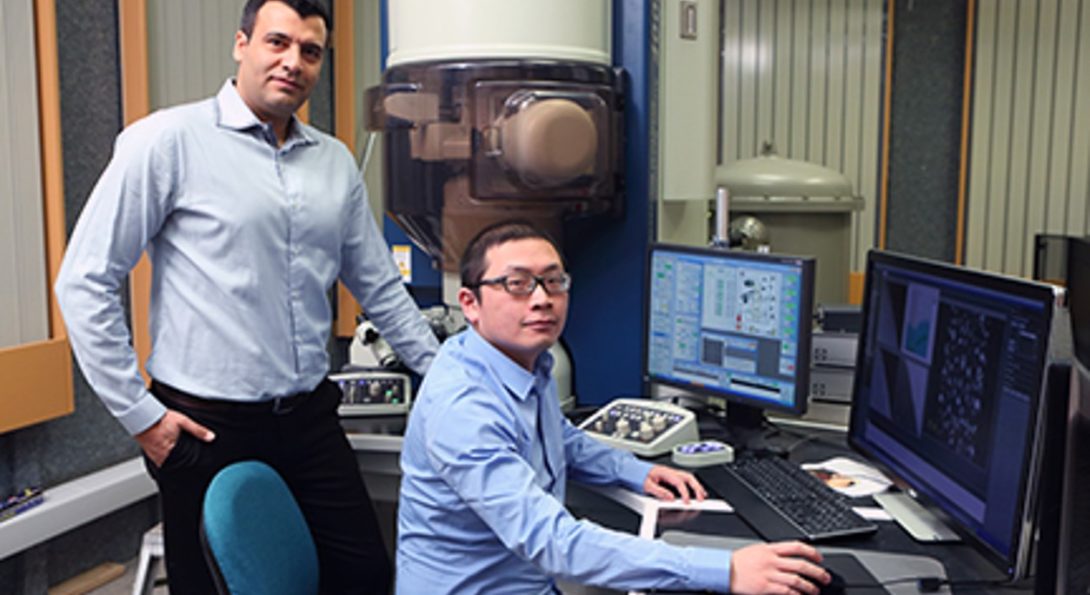Researchers prove that multiple elements can be perfectly mixed at atomic scales

What was thought to be impossible, was just proven to be possible!
Researchers in the Department of Mechanical and Industrial Engineering (MIE) at the University of Illinois Chicago (UIC) used an atomic resolution transmission electron microscope available at UIC to prove that up to eight metallic elements can be perfectly mixed into a single phase or structure in nanoparticle morphology with dimensions below hundred nanometer.. These nanoparticles produced by thermal shock at the University of Maryland defy the previous thoughts that immiscible multielement atoms cannot be perfectly mixed at subnanoscale. Their results are published in the paper “Carbo-Thermal Shock Synthesis of High Entropy Alloy Nanoparticles” in the journal Science.
The general area of research is related to a new class of materials that have come around in the last 10 or 15 years. Initially, there wasn’t much attention to them, but lately there has been a lot of interest in the materials engineering community. Traditionally in materials, scientist use alloying in order to improve properties. They add one or two elements to enhance its properties. It was commonly thought that if we mix too many elements into one material, the material will lose its interesting properties and it can even become brittle or glassy.
“But that’s not the case. What we have learned is that you can add a lot of elements into one particle at very small scales,” said Associate Professor Reza Shahbazian-Yassar, of the Department of Mechanical and Industrial Engineering at UIC. “The material we reported in Science has up to eight elements mixed all together forming a high-entropy system.”
“And the structure is likely not fragile,” said Shahbazian-Yassar. “In fact, it has a face centered cubic units cells, which is a very common and interesting crystal structure for ductile materials in engineering. That’s what we observed for these eight elements at the atomic level. All these different elements line up next to each other and can form a nice single crystal,” said Zhennan Huang who is a PhD student at the Department of Mechanical and Industrial Engineering at UIC and a co-author in this study..
The finding opens up a very interesting new areas in materials research, which allows the researchers to explore new properties. Collaborators from Johns Hopkins University used this to show that it has very excellent catalytic performance..
“Now we have tremendous opportunities to explore a new area of materials,” said Shahbazian-Yassar. “Proving that multi-element particles are stable and they can form a single phase and single crystal structure that is against some of the previous classical thoughts on the immiscibility of atoms or the solution limits.” “Some of the traditional thermodynamics, metals, or thinking has to be revised to fit this sort of new materials dynamics and systems that we have reported,” he added.
Since nanoparticles have been used in nearly all areas of science including energy storage and conversion, and much more — there are a lot of applications that this discovery will open up.
“This discovery is not bound to only eight elements. In the future it may be possible to mix more elements,” said Shahbazian-Yassar. “And more elements mean new materials; we have no idea how the properties will be and how the functionalities would be.”
Apart from mixing more elements, the researchers want to build on their work and see what else they uncover. “We can learn a lot about how exactly these particles form at small scales as it would improve our understanding on how to control the synthesis process,” he said.
The paper is a joint collaboration between UIC, University of Maryland, John Hopkins University, and MIT. The efforts from the University of Maryland is led by Professor Liangbing Hu and his team. The teams led by Professor Ju Li from the Massachusetts Institute of Technology, and Professor Chao Wang at Johns Hopkins University are co-authors in this work.
The research at UIC was made possible by a grant from National Science Foundation DMR-1620901.
Learn more about Shahbazian-Yassar’s research at http://nanoeng.uic.edu.